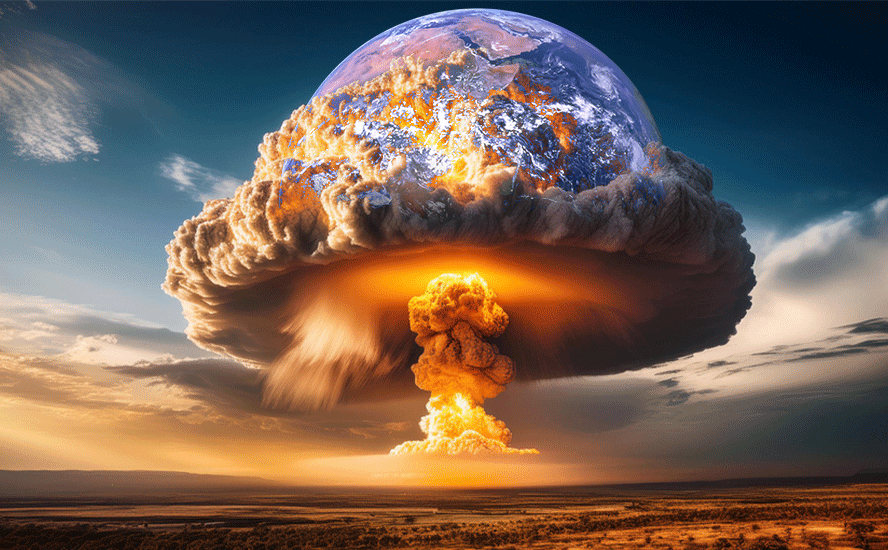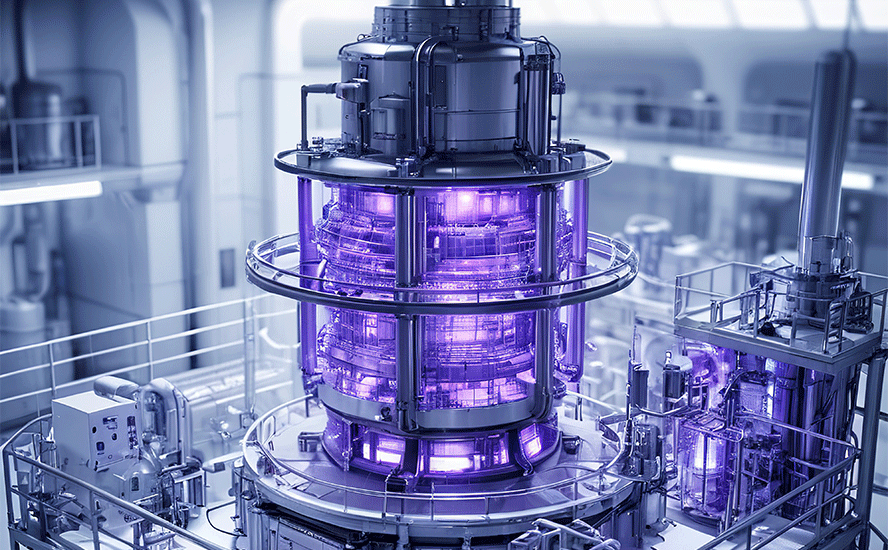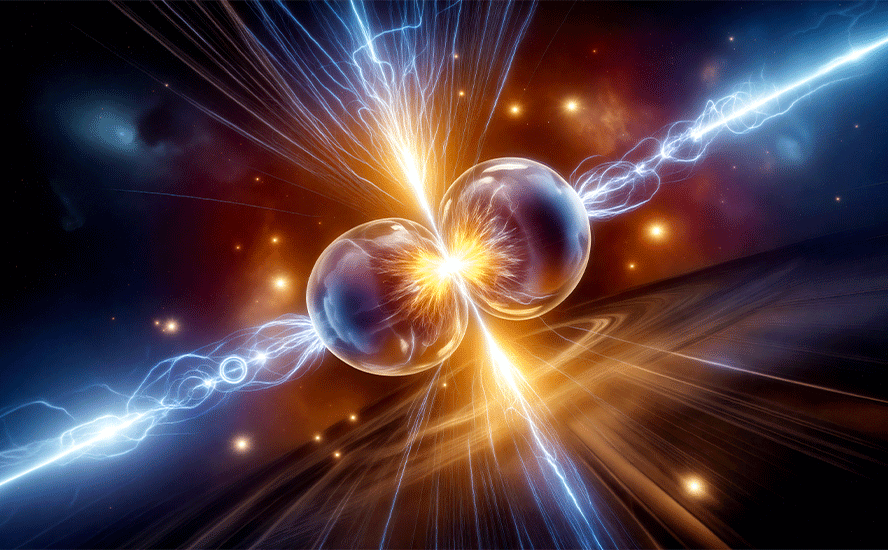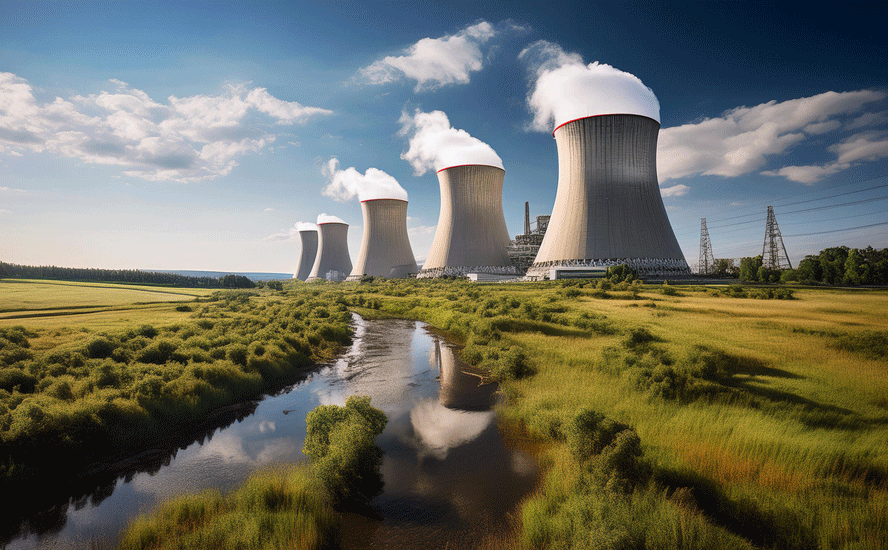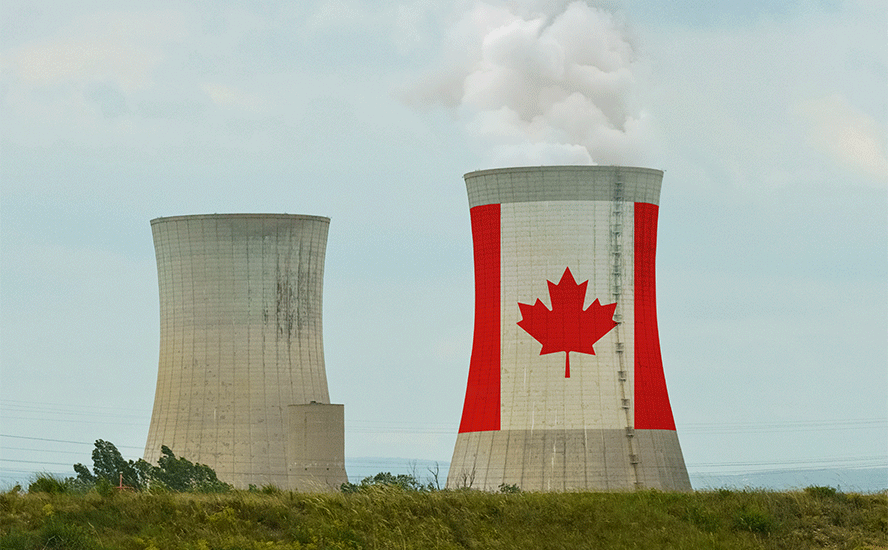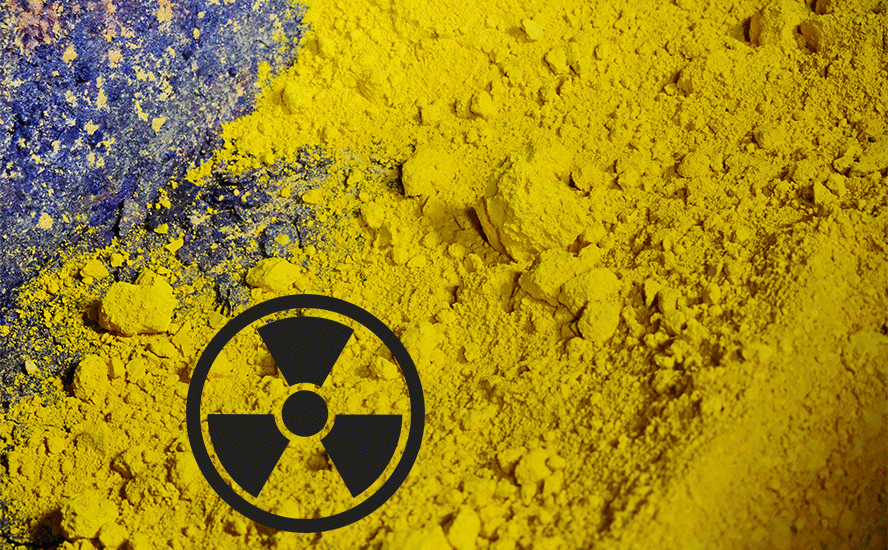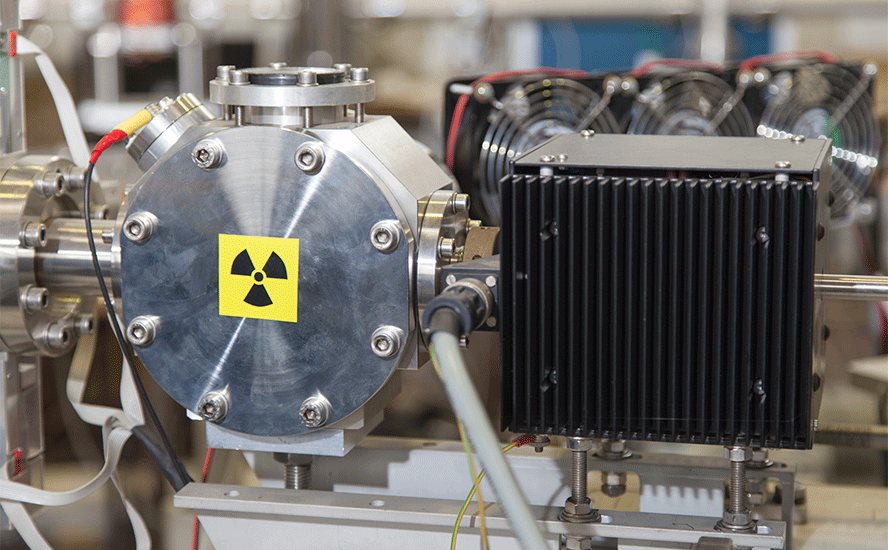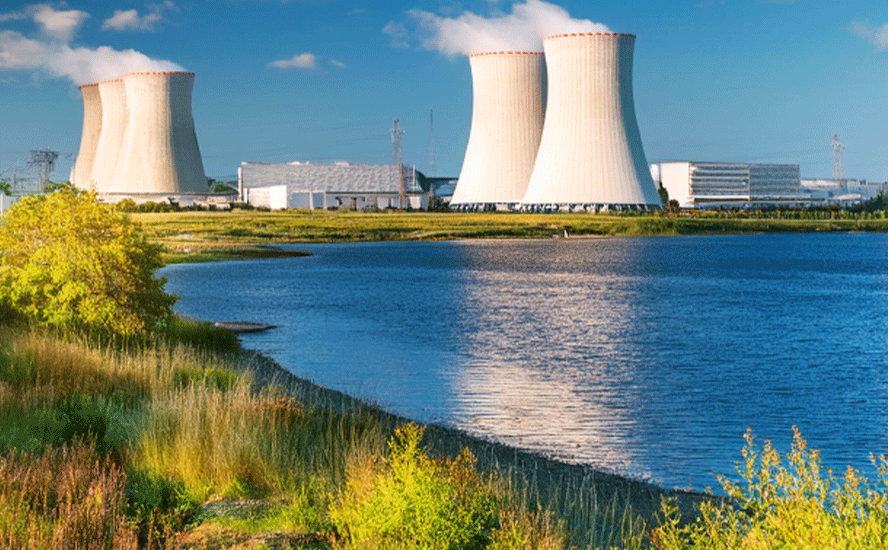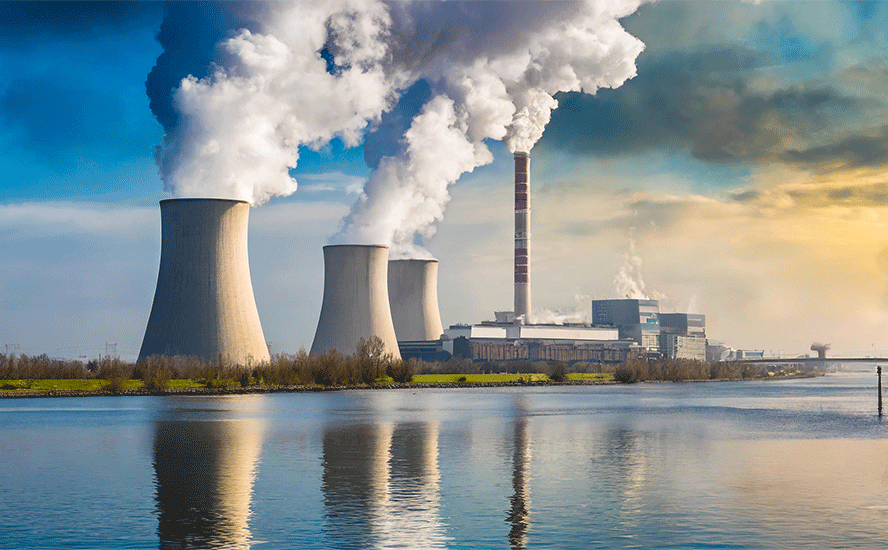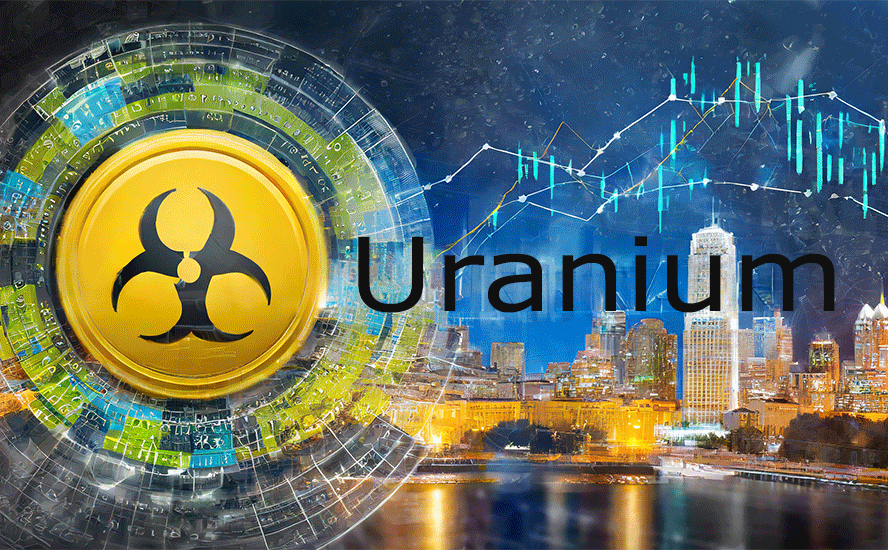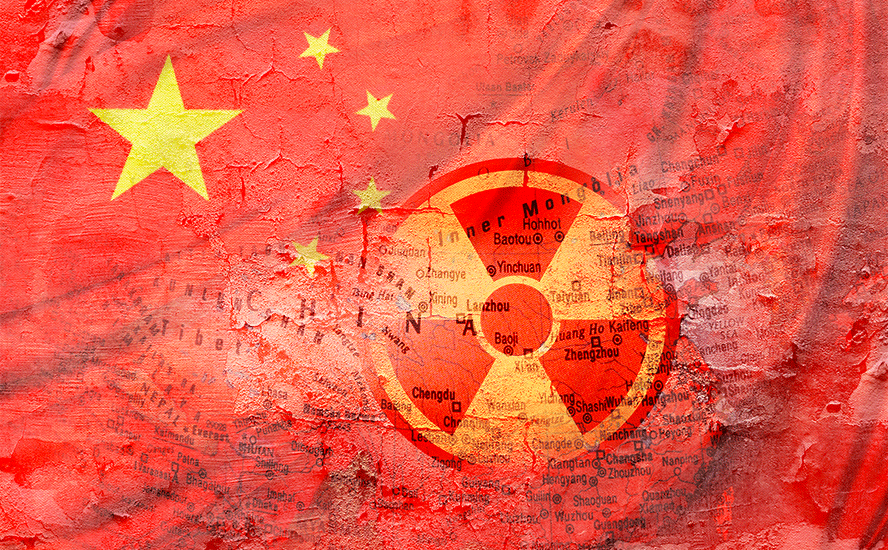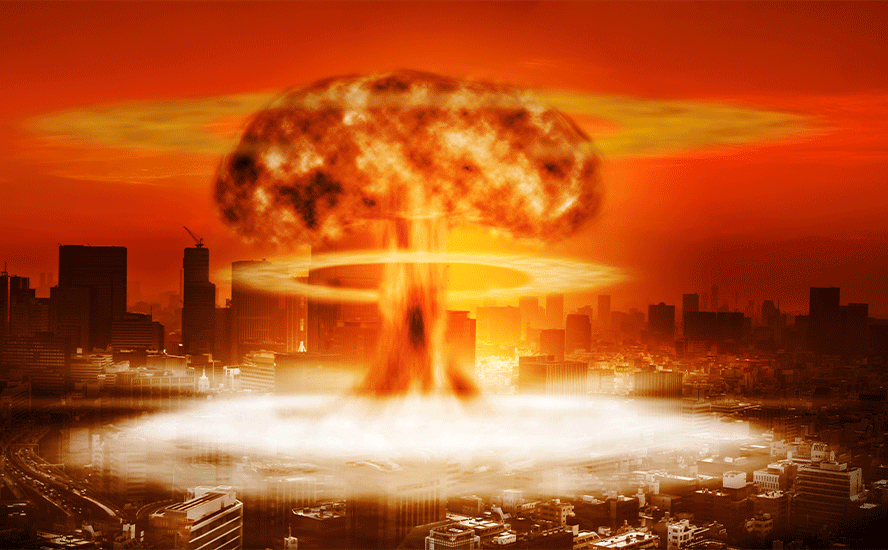Nuclear power deserves a bigger role in our clean energy mix – Richard Mills
2023.08.07
With each day, it becomes clearer that nuclear power should play a bigger part in the global energy mix.
According to the International Energy Agency, nuclear energy produces about 10% of the world’s electricity, slightly edging out solar, wind, geothermal and tidal, but still dwarfed by hydro (see below).

But in terms of primary energy consumption — referring to direct use of the energy in its raw form — nuclear’s share is only at around 4%, the lowest of any energy category, the IEA estimates.
Without a doubt, as one of the oldest low-carbon energy technologies around, nuclear has lots of room to move up the energy ranks.
Fossil Fuel Dominance
The fact of the matter is, fossil fuels remain THE dominant force in the world’s energy supply, as confirmed by a recent study published by Energy Institute in collaboration with consultancies KPMG and Kearny.
Mind you, this is even after a record year of growth in renewables; in 2022, we saw the largest-ever increase in wind and solar new build capacity, which together reached a record 12% share of global power generation.
Excluding hydroelectricity, renewables’ share of primary energy consumption reached 7.5% for the year, an increase of nearly 1% over 2021. Growth in renewable power, excluding hydro, maintained double digits at 14%.

Despite all these positive developments in renewables, over 80% of our total energy is still represented by fossil fuels (as shown in the above graphic), contributing to last year’s record high emission levels, which was the main takeaway from the EI report.
With how much we have invested in renewables over the years, we should have seen a discernible decline in fossil fuel consumption and emissions, yet that’s clearly not happening. At this point it will take decades before (already missed), called for climate goals would have become realistic.
Perhaps nuclear energy is the best shot we have at denting fossil fuels’ dominance.
While this has become a hot topic of debate since the Fukushima disaster, nuclear power is unquestionably clean, reliable and efficient; because otherwise there wouldn’t even be a debate.
Nuclear: The Solution?
When it comes to providing clean energy, nuclear power is almost flawless, as it generates our electricity via nuclear fission rather than chemical burning like with fossil fuels, leaving no carbon footprint at all.
So nuclear power plants basically produce no greenhouse gasses during operations, and over the course of a life cycle, they produce about the same amount of carbon dioxide-equivalent emissions per unit of electricity as wind, and one-third of the emissions per unit of electricity when compared with solar, according to the World Nuclear Association.

The Nuclear Energy Institute (NEI) estimates that the US alone avoided more than 476 million metric tons of carbon dioxide emissions in 2019. That’s the equivalent of removing 100 million cars from the road and more than all other clean energy sources combined.
Adopting nuclear energy also helps to preserve the air quality by removing thousands of tons of harmful pollutants each year that contribute to acid rain, smog, lung cancer and cardiovascular disease.
On top of keeping the air clean, the land footprint of nuclear plants is also much smaller compared to solar or wind farms. For example, a typical 1,000-megawatt nuclear facility in the US needs a little more than 1 square mile to operate, while wind farms require 360 times more area, the NEI estimates.
And when it’s compared against fossil fuels and even other renewables, nuclear’s reliability cannot be stressed enough.
Nuclear plants can operate at much higher capacity factors, meaning they run at maximum power for a longer time, and are able to produce energy more readily. In fact, nuclear boasts the highest capacity factor of any other energy source — producing reliable, carbon-free power more than 92% of the time — the US EIA finds.

In the US, nuclear power plants operate non-stop, generating nearly 20% of the nation’s electricity. Meanwhile, renewables like wind and solar are considered intermittent energy sources, and have very low capacity factors (under 40% for both in the US), implying they are not able to provide energy even half the time.
And contrary to popular belief, nuclear power actually releases less radiation into the environment than any other major energy source, according to a study published by Scientific American.

Coal, on the other hand, is likely the worst offender in this regard. Being a mineral found in the Earth’s crust, coal contains a substantial volume of the radioactive elements uranium and thorium. When burning coal for electricity, its organic materials become gasified, concentrating these mineral components into the remaining waste, called fly ash.
The study found that fly ash emitted by a coal-powered plant could carry 100 times more radiation into the surrounding environment than a nuclear power plant producing the same amount of energy. Fly ash uranium sometimes leaches into the soil and water surrounding a coal plant, affecting cropland and, in turn, food.
Richard Rhodes, a Pulitzer Prize-winning author, also argued in a July 2018 article that nuclear is safer than most energy sources and is needed if the world hopes to radically decrease its carbon emissions.
Nuclear fuel is also extremely dense, meaning the waste produced would be relatively small compared to other energy sources. In addition, nuclear waste can also be reprocessed and recycled. In the US, more than 90% of its spent fuel could be recycled to extend nuclear power production by hundreds of years.
An added bonus of considering nuclear power is the potential cost savings being passed on to consumers. It is estimated that nuclear energy can reduce average electricity bills in the US by as much as 6%, adding approximately $60 billion to the nation’s GDP.
A study by OECD Nuclear Energy Agency shows that nuclear power is cost competitive compared to other forms of energy generation. In fact, despite its high upfront capital investment, nuclear is likely the most cost-effective decarbonization investment in the long-run.
Based on the LCOE (levelized cost of energy) metric — the price that the electricity must fetch if the project is to break even — nuclear represents the lowest cost option for all countries, the NEA calculates.
Nuclear’s Proven Powers
At the end of the day, as the global population continues to grow, only the strongest energy source could keep up with our consumption. With nuclear power, the world would not have to even worry about an electricity shortage.
One uranium fuel pellet can create as much energy as one ton of coal, 149 gallons of oil or 17,000 cubic feet of natural gas. A typical nuclear reactor produces 1 gigawatt of electricity, which we simply cannot replace with a 1 gigawatt coal or renewable plant.
As mentioned, nuclear has the highest density capacity of any energy source, running at maximum power for pretty much the entire year. At the current rate, it produces about 1.5-2 times more power than natural gas and coal units, and is 2.5-3.5 times more reliable than wind and solar plants.
Civil nuclear power can now boast more than 18,000 reactor years of experience, says the World Nuclear Association.
Nuclear power plants are currently operational in 32 countries worldwide, but through regional transmission grids, many more countries depend in part on nuclear-generated power; Italy and Denmark, for example, get almost 10% of their electricity from imported nuclear power.
As illustrated by the graphics below, the biggest economies (France, USA, China, Russia and Canada) all rely on nuclear energy for their electricity, each to a varying degree.


France generates over 70% of its electricity from nuclear power – the largest share of any country globally – and its electricity sector emissions are one-sixth of the European average. In around 15 years, nuclear power went from playing a minor role in the French electricity system to producing the majority of its electricity, showing that nuclear energy can be expanded quickly if required.
Still, many parts of the world today have no nuclear-generated electricity, some down to regulatory and financial barriers, some down to nuclear still being “misunderstood” as a safety concern. But if global emissions continue to smash records like this past year, decision makers would eventually need to change their stance on nuclear energy.

Recent Developments
In fact, we’re already witnessing a change in attitude towards nuclear power here in Canada.
In early July, the government of Ontario announced plans to expand a nuclear plant into what could be the world’s biggest, potentially surpassing Japan’s Kashiwazaki-Kariwa plant, which already has seven reactors and more than 8 gigawatts of capacity.
The announcement signifies a reawakening of an industry that has been paused for decades amid concerns of safety and cost overruns. It also represents an open admission that bold steps must be taken to modernize an aging power grid that needs to add capacity without boosting already-high electricity costs, or threatening emissions goals.
As Canada’s most populous province, Ontario is currently home to all but one of the country’s 19 nuclear reactors, but most of those were built from the 1960s to 1980s. So the Bruce Power expansion project, which is expected to add as much as 4.8 gigawatts of capacity, is expected to be its first in 30 years.
“New nuclear generation is going to be critical to building the clean grid of the future,” said Todd Smith, Ontario’s energy minister stated at the time of the announcement.
“We are returning to our nuclear roots, and it couldn’t happen at a more important time,” John Gorman, president of the Canadian Nuclear Association, recently told Bloomberg. As global demand for clean energy soars, Canada is once again poised to be a supplier of nuclear reactors domestically and internationally, he added.

The federal government is currently developing plans to mandate a net-zero power grid by 2035, and nuclear power is likely to be at the forefront.
A study by the Ontario Society of Professional Engineers modeled eight different scenarios for creating a net zero electricity supply by the target year and found that expanding both nuclear capacity and long-term electricity storage is the best way to keep rates as low as possible.
Ontario alone will need to spend about C$400 billion ($303 billion) to double its generating capacity to 88.4 gigawatts by 2050, according to the agency that runs the province’s electric grid, as drivers switch to electric vehicles and homes and businesses gradually move away from fossil fuels.
Thanks to existing nuclear, hydroelectric and wind power, Ontario’s grid is already 90% clean, but growing demand could make that final 10% the hardest to reach. Nuclear could provide the optimal solution.
Also reviving its long-idled nuclear industry is the US, which recently announced the start of commercial operation of the unit 3 reactor at Plant Vogtle near Waynesboro, Georgia.
The Vogtle 3, which has been in construction since 2009 and took longer to complete than originally planned, marks the first reactor to deliver power to the US electric grid in nearly seven years. It’s expected to generate 1,110 megawatts of energy, powering an estimated 500,000 homes and businesses with clean energy for the next 60-80 years.
The last time a nuclear reactor started delivering energy to the power grid was in October 2016, when the Tennessee Valley Authority began commercial operation of its Watts Bar Unit 2, according to the Nuclear Regulatory Commission. Prior to that, there hadn’t been a new nuclear reactor turned on since Watts Bar 1 in May 1996. Most of the nuclear energy in the US came online in the 1970s and 1980s.
“The commercial operation of Vogtle Unit 3 marks a significant achievement for the US nuclear energy industry and a milestone in advancing global clean and reliable energy solutions,” Maria Korsnick, CEO of the Nuclear Energy Institute, a nuclear industry advocacy group, said in a statement.
Unit 4 of the Vogtle plant is expected to go into service during the late fourth quarter 2023, or early 2024.
Meanwhile across the pond, China continues to expand on what is the world’s biggest pipeline of new atomic energy projects, having approved six new nuclear reactors with a total investment of $17 billion this week.
China currently has the world’s third-largest nuclear fleet behind France and the US and accounts for 23 of the 55 reactors currently under construction globally, according to the World Nuclear Association. The country permitted 10 new reactors in 2022, and analysts believe the recent approvals might not be the end for this year.
Conclusion
With no pun intended, it’s clear to see that our climate targets for 2030 and beyond are pretty much all “up in the air” given the way we’ve relied on fossil fuels. The key is to transition towards cleaner energy sources.
Nuclear power, whether we like it or not, should have an increased share of the global energy mix to expedite the energy transition. It has a minimal carbon footprint of around 15-50 grams of CO2 per kilowatt hour. In comparison, the average footprint of a gas-powered generator is around 450 g of CO2/KWh, and for coal, it’s around 1,050 g CO2/KWh.
According to the IEA, nuclear energy enables about 1.5 gigatonnes of global emissions and 180 billion cubic metres of global gas demand to be avoided each year Therefore, nuclear power can absolutely contribute to the decarbonization of the global energy system.
We have to remember: Electricity production is and will be the No.1 source of carbon emissions due to the use of fossil fuels, and due to population growth, it’s expected that we’ll need twice as much electricity by 2050.
Climate scientists recommend increasing the share of low-carbon energies for power generation from 30% to over 80% by 2050, which is where nuclear power comes in. It currently provides almost 30% of the world’s low-carbon electricity, making it the second largest source after hydropower.
While investments in renewables such as wind and solar are also crucial, as the Energy Institute proved, they have yet to threaten fossil fuels’ dominance at all.
In all the energy transition scenarios studied by the IPCC and the IEA for the production of low-carbon electricity, significant development of renewable energies can only be envisaged along with nuclear power to avoid the use of fossil fuels. This is because renewable energies are, by nature, intermittent, and thus cannot meet the existing and future energy needs of 9.7 billion people, by 2050, on their own.
Of course, nuclear has its subtle drawbacks (costs aside, it’s unable to provide backup power), so it cannot be the only answer. But with the way things are today, nuclear power certainly deserves a bigger role to play.
Richard (Rick) Mills
aheadoftheherd.com
subscribe to my free newsletter
Legal Notice / Disclaimer
Ahead of the Herd newsletter, aheadoftheherd.com, hereafter known as AOTH.
Please read the entire Disclaimer carefully before you use this website or read the newsletter. If you do not agree to all the AOTH/Richard Mills Disclaimer, do not access/read this website/newsletter/article, or any of its pages. By reading/using this AOTH/Richard Mills website/newsletter/article, and whether you actually read this Disclaimer, you are deemed to have accepted it.
Any AOTH/Richard Mills document is not, and should not be, construed as an offer to sell or the solicitation of an offer to purchase or subscribe for any investment.
AOTH/Richard Mills has based this document on information obtained from sources he believes to be reliable, but which has not been independently verified.
AOTH/Richard Mills makes no guarantee, representation or warranty and accepts no responsibility or liability as to its accuracy or completeness.
Expressions of opinion are those of AOTH/Richard Mills only and are subject to change without notice.
AOTH/Richard Mills assumes no warranty, liability or guarantee for the current relevance, correctness or completeness of any information provided within this Report and will not be held liable for the consequence of reliance upon any opinion or statement contained herein or any omission.
Furthermore, AOTH/Richard Mills assumes no liability for any direct or indirect loss or damage for lost profit, which you may incur as a result of the use and existence of the information provided within this AOTH/Richard Mills Report.
You agree that by reading AOTH/Richard Mills articles, you are acting at your OWN RISK. In no event should AOTH/Richard Mills liable for any direct or indirect trading losses caused by any information contained in AOTH/Richard Mills articles. Information in AOTH/Richard Mills articles is not an offer to sell or a solicitation of an offer to buy any security. AOTH/Richard Mills is not suggesting the transacting of any financial instruments.
Our publications are not a recommendation to buy or sell a security – no information posted on this site is to be considered investment advice or a recommendation to do anything involving finance or money aside from performing your own due diligence and consulting with your personal registered broker/financial advisor.
AOTH/Richard Mills recommends that before investing in any securities, you consult with a professional financial planner or advisor, and that you should conduct a complete and independent investigation before investing in any security after prudent consideration of all pertinent risks. Ahead of the Herd is not a registered broker, dealer, analyst, or advisor. We hold no investment licenses and may not sell, offer to sell, or offer to buy any security.
Legal Notice / Disclaimer
Ahead of the Herd newsletter, aheadoftheherd.com, hereafter known as AOTH.Please read the entire Disclaimer carefully before you use this website or read the newsletter. If you do not agree to all the AOTH/Richard Mills Disclaimer, do not access/read this website/newsletter/article, or any of its pages. By reading/using this AOTH/Richard Mills website/newsletter/article, and whether you actually read this Disclaimer, you are deemed to have accepted it.


